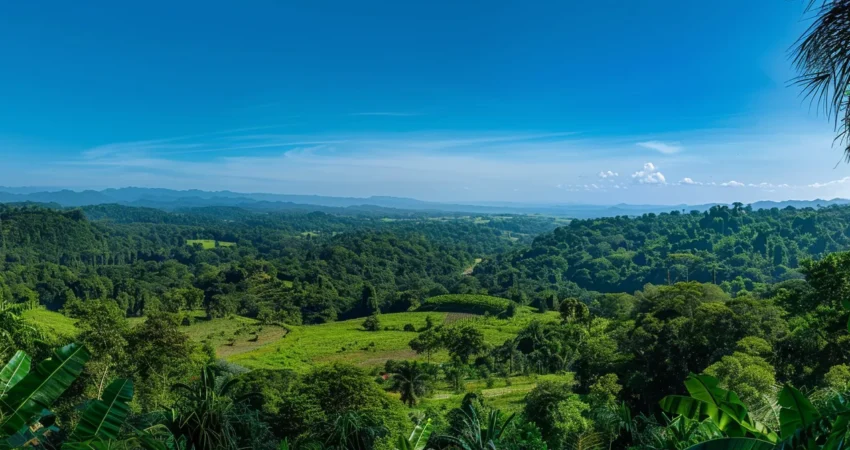- December 19, 2024
- Blacksheep Construction
Table Of Contents:
- Choosing Sustainable Timber for Construction: Benefits for Your Next Project
- Key Takeaways
- Understanding Sustainable Timber and Its Importance in Construction
- Environmental Benefits of Using Sustainable Timber
- Economic Advantages for Your Construction Project
- Enhancing Building Performance With Sustainable Timber
- Selecting the Right Sustainable Timber for Your Needs
- Sourcing Certified Sustainable Timber
- Conclusion
Benefits of Choosing Sustainable Timber for Your Construction Projects
Choosing sustainable timber for construction is not just a trend; it’s a necessity for environmentally conscious projects. With the rise of engineered wood and improved forest management practices, builders can now create structures that are both aesthetically pleasing and environmentally friendly. This article will explore the benefits of sustainable timber, including its positive impact on the environment and economic advantages for your construction project. By understanding these key points, homeowners can make informed decisions that enhance their architecture while addressing the pressing issue of sustainability. Black Sheep Construction is committed to guiding you through this essential choice.
Explore the Benefits of Choosing Sustainable Timber: Table of Contents
- Sustainable timber supports responsible forestry and combats climate change through carbon sequestration
- Choosing sustainable timber enhances biodiversity and reduces greenhouse gas emissions in construction
- Certified sustainable timber ensures responsible sourcing and aligns with modern environmental standards
- Utilizing sustainable timber can lead to long-term cost savings and increased property value
- Innovations in timber construction improve energy efficiency and simplify maintenance for builders
Understanding Sustainable Timber and Its Importance in Construction

Sustainable timber is defined by its sourcing from responsibly managed forests, which play a crucial role in combating climate change through carbon sequestration. Companies like black sheep construction adopt these practices to ensure environmental responsibility. This section will explore the impact of responsible forestry on timber supply, compare sustainable timber to conventional wood materials, and address common myths about sustainable timber. Understanding these aspects is essential for making informed choices in green building projects.
What Defines Sustainable Timber?
Sustainable timber is characterized by its origin from forests that are managed with a focus on environmental health, ensuring that practices do not contribute to deforestation or excessive waste. This approach not only supports the carbon cycle by maintaining forest ecosystems but also helps mitigate the risk of wildfires, which can devastate infrastructure and habitats. By choosing sustainable timber, builders can contribute to a more responsible construction industry that prioritizes ecological balance and long-term resource availability.
The Impact of Responsible Forestry on Timber Supply
The impact of responsible forestry on timber supply is significant, as it directly influences the health of ecosystems and the reduction of greenhouse gas emissions. By implementing sustainable practices such as reforestation and selective logging, the built environment can benefit from a steady supply of timber while ensuring that forest resources are preserved for future generations. This approach not only supports sustainable architecture but also enhances biodiversity, creating a balanced relationship between construction needs and environmental stewardship.
Comparing Sustainable Timber to Conventional Wood Materials
When comparing sustainable timber to conventional wood materials, several key differences emerge that can significantly impact construction projects. Sustainable timber, often sourced from responsibly managed forests in the Pacific Northwest, not only supports local ecosystems but also contributes to a lower carbonfootprint due to its energy-efficient harvesting practices. In contrast, conventional lumber may come from unsustainable sources, leading to deforestation and increased greenhouse gas emissions, which can adversely affect the climate. By choosing sustainable timber, builders can ensure that their projects are not only environmentally friendly but also aligned with modern standards of responsible construction.
Addressing Common Myths About Sustainable Timber
Many misconceptions surround sustainable timber, particularly regarding its environmental impact. One common myth is that sustainable timber harvesting, such as selective logging, leads to clearcutting, which devastates habitats and contributes to pollution. In reality, responsible forestry practices prioritize fire protection and ecosystem health, ensuring that timber sourcing does not harm the atmosphere or local wildlife. By understanding these facts, builders can make informed decisions that support sustainable construction while addressing their project needs.
- Understanding the definition of sustainable timber.
- The impact of responsible forestry on timber supply.
- Comparing sustainable timber to conventional wood materials.
- Addressing common myths about sustainable timber.
Sustainable timber stands as a choice that shapes our future. Its environmental benefits reveal a path toward a healthier planet, inviting us to explore further.
Environmental Benefits of Using Sustainable Timber
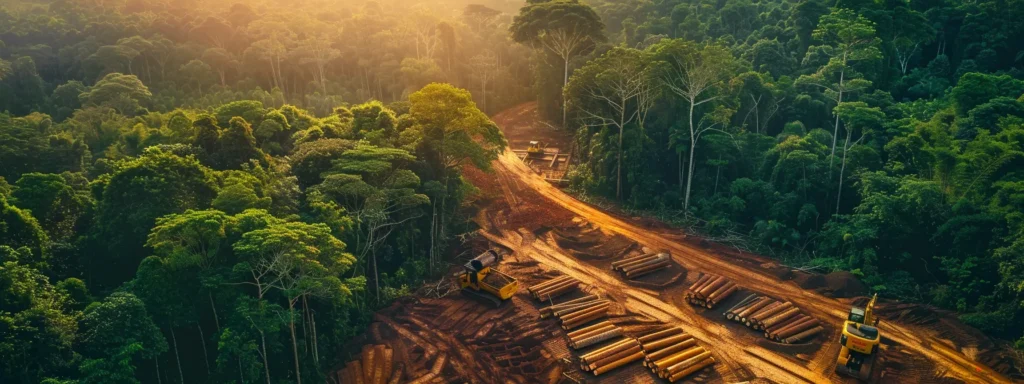
Using sustainable timber in construction offers significant environmental benefits. By selecting this renewable resource, builders can reduce carbon emissions associated with traditional materials. Sustainable practices support biodiversity, minimize waste in the building process, and contribute to climate change solutions. This section will explore how timber framing aligns with the international building code while promoting eco-friendly construction methods.
Reducing Carbon Emissions With Timber Choices
Choosing sustainable timber as a building material significantly contributes to reducing carbon emissions in construction. Unlike steel, which has a high carbonfootprint during manufacturing, sustainable timber sequesters carbon throughout its lifecycle, making it an eco-friendly alternative. By opting for timber in projects, especially in affordable housing, builders can support sustainable development while minimizing the environmental impact associated with traditional construction materials.
Supporting Biodiversity Through Sustainable Practices
Supporting biodiversity through sustainable practices is a critical aspect of using laminated veneer lumber in construction. By sourcing timber from responsibly managed forests, builders contribute to the preservation of diverse ecosystems, which act as vital carbon sinks. This approach not only reduces the global warming potential associated with traditional materials like cement but also minimizes the environmental impact of transport, ensuring that construction projects align with ecological sustainability goals.
- Utilizing laminated veneer lumber promotes biodiversity.
- Responsible sourcing helps maintain diverse ecosystems.
- Forests serve as carbon sinks, reducing global warming potential.
- Minimizing transport impacts supports eco-friendly practices.
Minimizing Waste in the Building Process
Minimizing waste in the building process is a key advantage of using sustainable timber, particularly in regions like Oregon where responsible forestry practices are emphasized. By selecting materials with low embodied carbon, builders can significantly reduce the environmental impact of their projects. Additionally, incorporating mass timber solutions allows for greater reuse of materials, further enhancing sustainability and efficiency in construction, while addressing the growing need for eco-friendly building practices.
Contributing to Climate Change Solutions With Timber
Utilizing sustainable timber in construction plays a vital role in contributing to climate change solutions. By implementing sustainable forest management practices, builders can significantly reduce greenhouse gas emissions associated with traditional materials. Innovations in prefabrication techniques further enhance the efficiency of timber use, allowing for lower carbon footprints throughout the construction process.
| Aspect | Impact |
|---|---|
| Sustainable Forest Management | Reduces greenhouse gas emissions and promotes ecosystem health. |
| Innovation in Prefabrication | Enhances efficiency and minimizes waste in construction. |
| Carbon Sequestration | Timber stores carbon, contributing to climate change mitigation. |
Sustainable timber not only nurtures the earth but also opens doors to financial gains. Understanding these economic advantages can make a significant difference in your construction project.
Economic Advantages for Your Construction Project
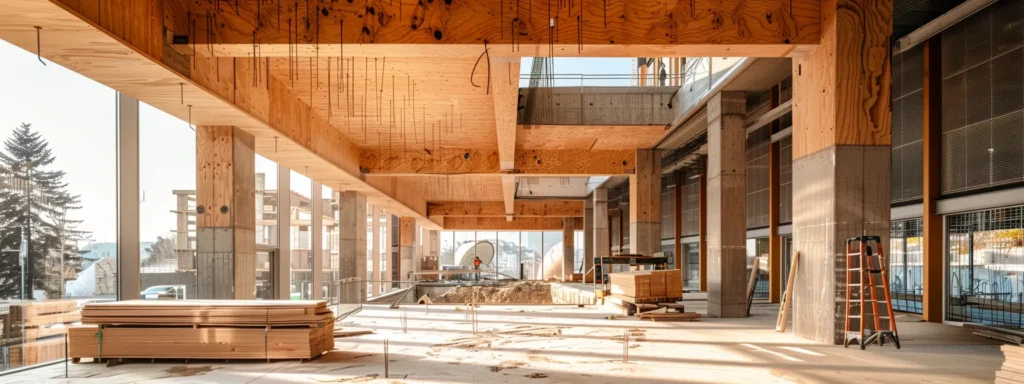
Choosing sustainable timber for construction offers significant economic advantages. Long-term cost savings arise from reduced energy consumption in passive house designs and lower embodied carbon materials. Meeting market demand for eco-friendly buildings enhances project appeal, while accessing incentives for sustainable construction can further offset costs. Additionally, selecting timber species known for sustainability can increase property value, making it a wise investment for architects and builders alike.
Long-Term Cost Savings With Sustainable Materials
Long-term cost savings with sustainable materials, particularly sustainable timber, can significantly enhance the overall productivity of construction projects. By utilizing responsibly sourced timber, builders can reduce their carbon impact and lower the overall footprint of their projects. This approach not only streamlines the value chain by minimizing waste and energy consumption but also positions projects favorably in a market increasingly focused on eco-friendly practices.
- Utilizing sustainable timber reduces carbon impact.
- Lowering the overall footprint enhances project efficiency.
- Streamlining the value chain minimizes waste and energy consumption.
- Eco-friendly practices increase market appeal.
Meeting Market Demand for Eco-Friendly Buildings
Meeting the growing market demand for eco-friendly buildings is essential for construction projects in North America. Research indicates that consumers increasingly prefer sustainable resources, which enhances the appeal of projects that utilize sustainable timber. By integrating sustainable practices into the supply chain, builders not only support biodiversity but also position their projects favorably in a competitive market focused on environmental responsibility:
- Understanding consumer preferences for eco-friendly buildings.
- Utilizing sustainable resources enhances project appeal.
- Supporting biodiversity through responsible sourcing.
- Integrating sustainable practices into the supply chain.
Accessing Incentives for Sustainable Construction
Accessing incentives for sustainable construction can significantly enhance the economic viability of projects utilizing sustainable timber. Many regions offer financial benefits for builders who prioritize eco-friendly materials, such as timber beams, which not only improve fire safety but also contribute to a reduced ecological footprint compared to traditional concrete structures. By participating in the circular economy, builders can take advantage of these incentives, ultimately lowering costs while promoting responsible construction practices that align with modern sustainability goals.
Increasing Property Value With Green Building Choices
Investing in sustainable timber for construction can significantly increase property value, particularly in regions like British Columbia where eco-friendly practices are highly regarded. Properties built with sustainable materials often attract buyers who prioritize low carbon footprints and responsible sourcing, including recycling practices from local sawmills. By choosing sustainable timber, builders not only enhance the market appeal of their projects but also contribute to a growing demand for green building choices that align with modern environmental standards.
As the costs of construction rise, finding smart solutions becomes essential. One such solution lies in the use of sustainable timber, which not only cuts expenses but also boosts building performance.
Enhancing Building Performance With Sustainable Timber

Leveraging the strength and durability of sustainable timber enhances building performance, making it a preferred choice in sustainable design. This section will cover how natural insulation improves energy efficiency, the fire safety considerations in timber structures, and the simplified maintenance that quality timber offers. Each aspect contributes to creating resilient and eco-friendly construction projects.
Leveraging the Strength and Durability of Timber
Leveraging the strength and durability of sustainable timber significantly enhances building performance, making it an ideal choice for construction projects. Timber’s natural resilience allows it to withstand various environmental stresses, reducing the need for frequent repairs and maintenance. By selecting high-quality, sustainably sourced timber, builders can ensure that their structures not only meet modern standards of durability but also contribute to a more sustainable future.
Improving Energy Efficiency With Natural Insulation
Improving energy efficiency with natural insulation is a significant advantage of using sustainable timber in construction. Timber possesses inherent insulating properties that help regulate indoor temperatures, reducing the reliance on heating and cooling systems. By incorporating sustainably sourced timber, builders can create energy-efficient structures that not only lower utility costs but also contribute to a more sustainable environment, addressing the growing demand for eco-friendly building solutions.
Understanding Fire Safety in Timber Structures
Understanding fire safety in timber structures is essential for builders and architects aiming to utilize sustainable timber in their projects. Modern advancements in fire-resistant treatments and design techniques have significantly improved the safety of timber buildings, allowing them to meet stringent fire codes. By incorporating these innovations, builders can create structures that not only leverage the aesthetic and environmental benefits of sustainable timber but also ensure the safety and well-being of occupants.
Simplifying Maintenance With Quality Timber
Simplifying maintenance with quality timber is a significant advantage for construction projects. Sustainable timber, known for its durability and resilience, requires less frequent repairs compared to other materials, which can lead to long-term cost savings. By selecting high-quality, sustainably sourced timber, builders can ensure that their structures not only maintain their aesthetic appeal but also reduce the time and resources spent on upkeep, ultimately enhancing the overall performance of the building.
Sustainable timber can transform a building, but choosing the right type is crucial. Understanding your options will lead to better decisions and lasting results.
Selecting the Right Sustainable Timber for Your Needs
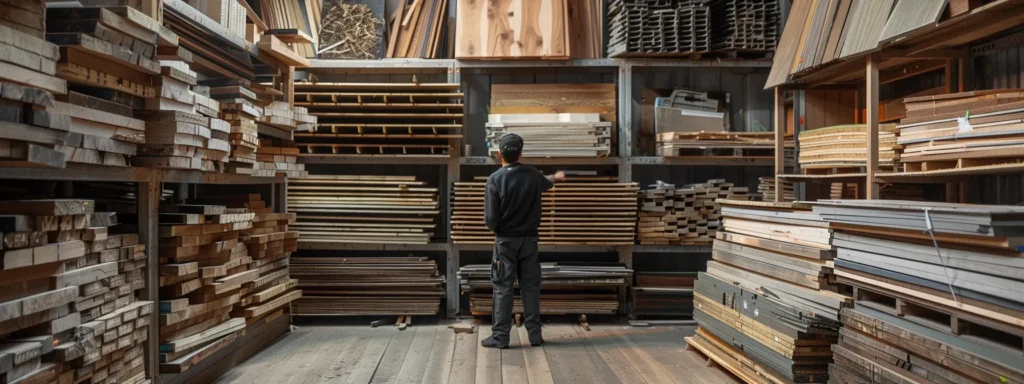
Selecting the right sustainable timber for construction involves exploring different types of eco-friendly timber, evaluating timber quality, and partnering with reputable sustainable suppliers. Builders must also balance design and sustainability goals to ensure that their projects meet both aesthetic and environmental standards. Each of these aspects plays a crucial role in achieving successful and responsible construction outcomes.
Exploring Different Types of Eco-Friendly Timber
When exploring different types of eco-friendly timber, builders can consider options such as bamboo, reclaimed wood, and certified hardwoods. Bamboo, known for its rapid growth and strength, serves as a sustainable alternative that can be used in various applications, from flooring to structural elements. Reclaimed wood, sourced from old buildings or furniture, not only reduces waste but also adds character to new constructions, while certified hardwoods ensure responsible sourcing practices that align with environmental standards. By understanding these options, builders can make informed choices that enhance the sustainability of their projects.
Evaluating Timber Quality for Your Project
Evaluating timber quality is essential for ensuring that construction projects meet both aesthetic and structural requirements. Builders should consider factors such as the timber’s grade, moisture content, and certifications from recognized organizations, which indicate responsible sourcing and sustainability. By selecting high-quality sustainable timber, builders can enhance the durability and performance of their structures while contributing to environmentally friendly practices that resonate with modern construction standards.
Partnering With Reputable Sustainable Suppliers
Partnering with reputable sustainable suppliers is essential for builders seeking to incorporate sustainable timber into their projects. These suppliers not only provide high-quality materials but also ensure that their timber is sourced from responsibly managed forests, aligning with environmental standards. By establishing relationships with trusted suppliers, builders can gain access to a variety of eco-friendly timber options, receive expert guidance on material selection, and enhance the overall sustainability of their construction projects.
| Supplier Criteria | Benefits |
|---|---|
| Responsible Sourcing | Ensures timber is harvested sustainably, protecting ecosystems. |
| Quality Assurance | Provides high-quality materials that meet construction standards. |
| Expert Guidance | Offers insights on selecting the right timber for specific projects. |
Balancing Design and Sustainability Goals
Balancing design and sustainability goals is essential for builders aiming to create aesthetically pleasing and environmentally responsible structures. By selecting sustainable timber, architects can achieve innovative designs while ensuring that their materials align with eco-friendly practices. For instance, using reclaimed wood not only adds unique character to a project but also supports waste reduction, demonstrating that sustainability and design can coexist harmoniously in modern construction.
Choosing the right timber is just the beginning. Next, the focus shifts to finding sources that guarantee sustainability, ensuring your project is both responsible and rewarding.
Sourcing Certified Sustainable Timber
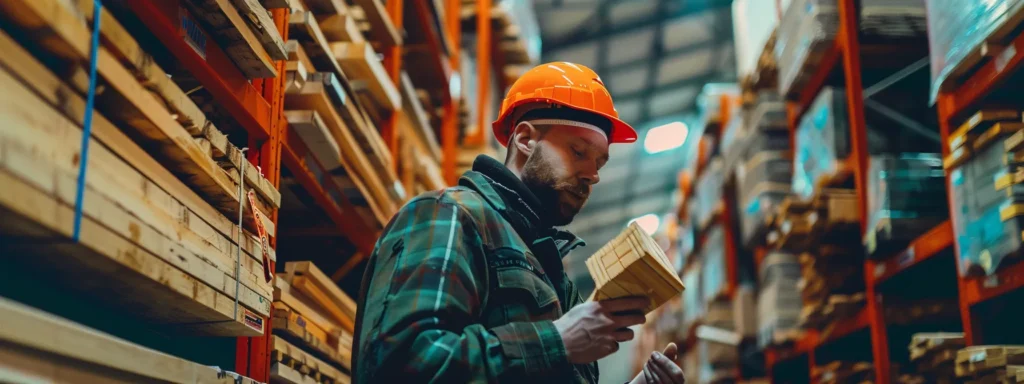
Sourcing certified sustainable timber involves recognizing trusted certification labels that ensure responsible forestry practices. Builders must navigate standards from key organizations to verify sustainability claims effectively. Integrating sustainable timber into procurement plans not only enhances project credibility but also aligns with environmental goals. Each of these aspects plays a vital role in making informed choices for construction projects.
Recognizing Trusted Certification Labels
Recognizing trusted certification labels is essential for builders seeking certified sustainable timber. Labels such as the Forest Stewardship Council (FSC) and the Sustainable Forestry Initiative (SFI) indicate that the timber has been sourced from responsibly managed forests, ensuring environmental integrity and social responsibility. By prioritizing these certifications, builders can confidently select materials that not only meet sustainability standards but also enhance the credibility of their construction projects.
Navigating Standards From Key Organizations
Navigating standards from key organizations is essential for builders seeking certified sustainable timber. Organizations such as the Forest Stewardship Council (FSC) and the Sustainable Forestry Initiative (SFI) provide clear guidelines that ensure timber is sourced from responsibly managed forests. By understanding these standards, builders can confidently select materials that not only meet sustainability criteria but also enhance the credibility of their construction projects, ultimately supporting a more environmentally responsible industry.
Verifying Sustainability Claims Effectively
Verifying sustainability claims effectively is crucial for builders committed to sourcing certified sustainable timber. Builders should look for reputable certification labels, such as the Forest Stewardship Council (FSC) and the Sustainable Forestry Initiative (SFI), which indicate that the timber has been harvested from responsibly managed forests. Additionally, engaging with suppliers who provide transparency about their sourcing practices can help ensure that the materials used in construction align with environmental standards, ultimately supporting a more sustainable building process.
Integrating Sustainable Timber Into Procurement Plans
Integrating sustainable timber into procurement plans is essential for builders committed to environmentally responsible construction. By prioritizing certified sustainable timber, such as that sourced from Forest Stewardship Council (FSC) certified suppliers, builders can ensure that their materials meet high environmental standards. This approach not only enhances the credibility of construction projects but also aligns with growing market demands for eco-friendly practices, ultimately leading to more successful and sustainable outcomes.
Conclusion
Choosing sustainable timber for construction significantly enhances environmental responsibility while providing economic advantages. By selecting responsibly sourced materials, builders can reduce carbon emissions, support biodiversity, and minimize waste throughout the building process. This approach not only meets the growing market demand for eco-friendly practices but also increases property value and project appeal. Embracing sustainable timber is a vital step toward creating resilient, efficient, and environmentally conscious construction projects.

